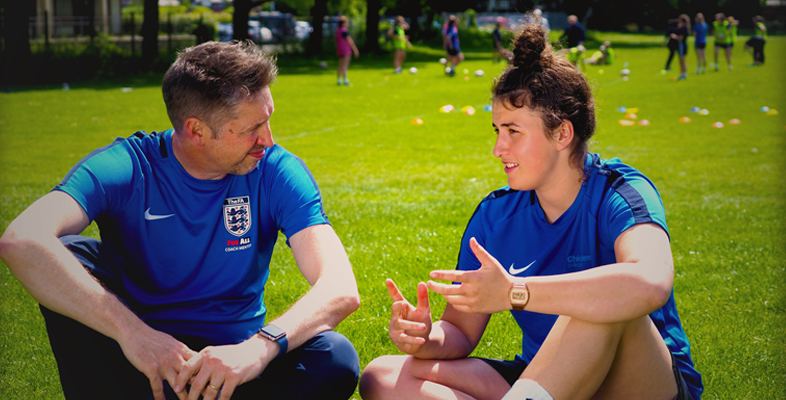1 Coach–coach developer relationships
How can we make sense of the relationship between a coach and coach developer, and does it in any way share similarities to the relationships between coaches and athletes?

One answer to this question might come in the form of research identifying four key elements that contribute to a healthy coach–athlete relationship (Jowett, 2005).
Activity 1 Explaining coach–coach developer relationships
Think about the relationships you have developed with the coaches you support. How well do the following elements of the coach–athlete relationship model apply to your coach–coach developer relationships?
Closeness– the degree to which two people are connected with expressions of like, trust, respect and appreciation indicating a positive interpersonal relationship.
Commitment– both parties’ desire to maintain their partnership over time.
Complementarity– the extent to which interaction between both is perceived as cooperative e.g. behaviours such as being responsive, at ease and willing.
Co-orientation– the degree to which similarities, including empathetic understanding between both parties, are shared.
Discussion
Ideally, all these would be evident between a coach and coach developer, and they align with some of the ideas in Session 1 about ‘Exploring coach developer expertise?’. However, in your role perhaps circumstances get in the way of these relationships. For instance, you might be:
- a stranger or guest coming in from outside the coach’s environment
- responsible for formally assessing the coach, or sometimes perceived by the coach as judging them in some way
- limited by a fixed period of time in which you can support the coach, and/or
- influenced by the transactional nature of your role when you are remunerated for your work as a coach developer.
These all impact the relationship between a coach and coach developer. Hopefully complementarity is evident since the coach should want to learn and the coach developer should want the coach to learn; there are shared goals about the experience.
But how can the coach developer build mutual respect and rapport, how can they build closeness?
To begin to answer this question you’ll focus on the behaviours demonstrated in a training and learning situation taking place in a motor racing team.
